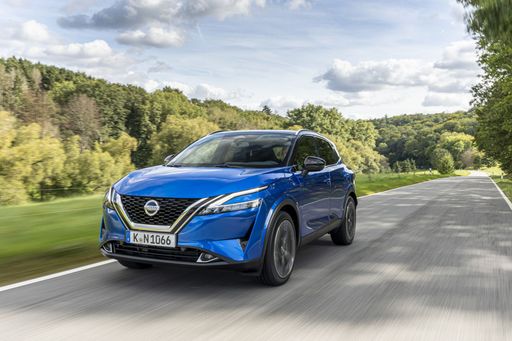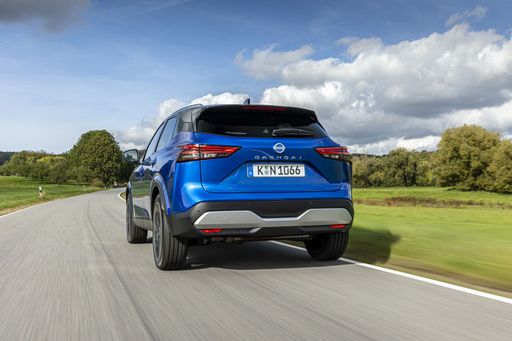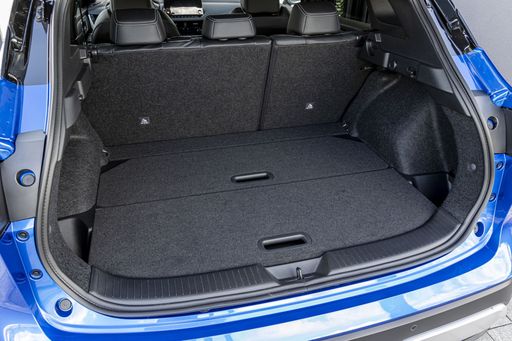Nissan Qashqai vs Toyota Proace Bus – Which model is better for everyday use?
Two cars, one duel: Nissan Qashqai meets Toyota Proace Bus.
Which one wins in performance, efficiency and value for money? Find out now!
Costs and Efficiency:
Price and efficiency are often the first things buyers look at. Here it becomes clear which model has the long-term edge – whether at the pump, the plug, or in purchase price.
Nissan Qashqai has a hardly perceptible advantage in terms of price – it starts at 29400 £, while the Toyota Proace Bus costs 31600 £. That’s a price difference of around 2173 £.
Fuel consumption also shows a difference: Nissan Qashqai manages with 5.10 L and is therefore clearly more efficient than the Toyota Proace Bus with 7.30 L. The difference is about 2.20 L per 100 km.
Engine and Performance:
Power, torque and acceleration say a lot about how a car feels on the road. This is where you see which model delivers more driving dynamics.
When it comes to engine power, the Nissan Qashqai has a barely noticeable edge – offering 190 HP compared to 177 HP. That’s roughly 13 HP more horsepower.
In acceleration from 0 to 100 km/h, the Nissan Qashqai is decisively quicker – completing the sprint in 7.90 s, while the Toyota Proace Bus takes 13.30 s. That’s about 5.40 s faster.
In terms of top speed, the Nissan Qashqai performs to a small extent better – reaching 206 km/h, while the Toyota Proace Bus tops out at 170 km/h. The difference is around 36 km/h.
There’s also a difference in torque: Toyota Proace Bus pulls slightly stronger with 400 Nm compared to 330 Nm. That’s about 70 Nm difference.
Space and Everyday Use:
Beyond pure performance, interior space and usability matter most in daily life. This is where you see which car is more practical and versatile.
Seats: Toyota Proace Bus offers significantly more seating capacity – 9 vs 5.
In curb weight, Nissan Qashqai is evident lighter – 1420 kg compared to 1835 kg. The difference is around 415 kg.
In terms of boot space, the Nissan Qashqai offers decisively more room – 504 L compared to 0 L. That’s a difference of about 504 L.
When it comes to payload, Toyota Proace Bus significantly takes the win – 1265 kg compared to 520 kg. That’s a difference of about 745 kg.
Who comes out on top?
Overall, the Nissan Qashqai shows itself to be outperforms in nearly all aspects and secures the title of DriveDuel Champion.
It convinces with the more balanced overall package and proves to be the more versatile choice for everyday use.

Nissan Qashqai
Nissan Qashqai
The Nissan Qashqai stands out in the compact SUV market with its sleek design and versatile features. Its smooth ride and refined interior make it a popular choice for both city driving and weekend adventures. Advanced safety technologies and user-friendly infotainment add to its appeal, ensuring a comfortable and secure driving experience for all passengers.
details @ Nissan
@ Nissan
 @ Nissan
@ Nissan
 @ Nissan
@ Nissan
 @ Nissan
@ Nissan
 @ Nissan
@ Nissan
Toyota Proace Bus
The Toyota Proace Bus offers a versatile and practical solution for those in need of spacious passenger transport combined with a touch of comfort. Its interior is designed to maximise seating capacity while ensuring that both driver and passengers can enjoy a pleasant journey. With its efficient engine options and reliable build quality, this vehicle remains a popular choice for families and businesses alike.
details

|
|
|
|
|
Costs and Consumption |
|
|---|---|
|
Price
29400 - 42500 £
|
Price
31600 - 61800 £
|
|
Consumption L/100km
5.1 - 6.8 L
|
Consumption L/100km
7.3 - 7.4 L
|
|
Consumption kWh/100km
-
|
Consumption kWh/100km
24.2 - 24.4 kWh
|
|
Electric Range
-
|
Electric Range
218 - 343 km
|
|
Battery Capacity
-
|
Battery Capacity
-
|
|
co2
116 - 154 g/km
|
co2
0 - 193 g/km
|
|
Fuel tank capacity
55 L
|
Fuel tank capacity
69 L
|
Dimensions and Body |
|
|---|---|
|
Body Type
SUV
|
Body Type
Bus
|
|
Seats
5
|
Seats
5 - 9
|
|
Doors
5
|
Doors
4 - 5
|
|
Curb weight
1420 - 1665 kg
|
Curb weight
1835 - 2140 kg
|
|
Trunk capacity
479 - 504 L
|
Trunk capacity
0 L
|
|
Length
4425 mm
|
Length
4983 - 5333 mm
|
|
Width
1835 mm
|
Width
1920 mm
|
|
Height
1625 mm
|
Height
1890 mm
|
|
Max trunk capacity
1422 - 1447 L
|
Max trunk capacity
-
|
|
Payload
466 - 520 kg
|
Payload
825 - 1265 kg
|
Engine and Performance |
|
|---|---|
|
Engine Type
Petrol MHEV, Full Hybrid
|
Engine Type
Electric, Diesel
|
|
Transmission
Manuel, Automatic
|
Transmission
Automatic, Manuel
|
|
Transmission Detail
Manual Gearbox, CVT, Reduction Gearbox
|
Transmission Detail
Reduction Gearbox, Manual Gearbox, Automatic Gearbox
|
|
Drive Type
Front-Wheel Drive, All-Wheel Drive
|
Drive Type
Front-Wheel Drive
|
|
Power HP
140 - 190 HP
|
Power HP
136 - 177 HP
|
|
Acceleration 0-100km/h
7.9 - 10.2 s
|
Acceleration 0-100km/h
13.30 s
|
|
Max Speed
170 - 206 km/h
|
Max Speed
130 - 170 km/h
|
|
Torque
240 - 330 Nm
|
Torque
260 - 400 Nm
|
|
Number of Cylinders
3 - 4
|
Number of Cylinders
4
|
|
Power kW
103 - 140 kW
|
Power kW
100 - 130 kW
|
|
Engine capacity
1332 - 1497 cm3
|
Engine capacity
1997 cm3
|
General |
|
|---|---|
|
Model Year
2024
|
Model Year
2024 - 2025
|
|
CO2 Efficiency Class
E, D
|
CO2 Efficiency Class
A, G
|
|
Brand
Nissan
|
Brand
Toyota
|
Is the Nissan Qashqai offered with different drivetrains?
Available configurations include Front-Wheel Drive or All-Wheel Drive.
The prices and data displayed are estimates based on German list prices and may vary by country. This information is not legally binding.
